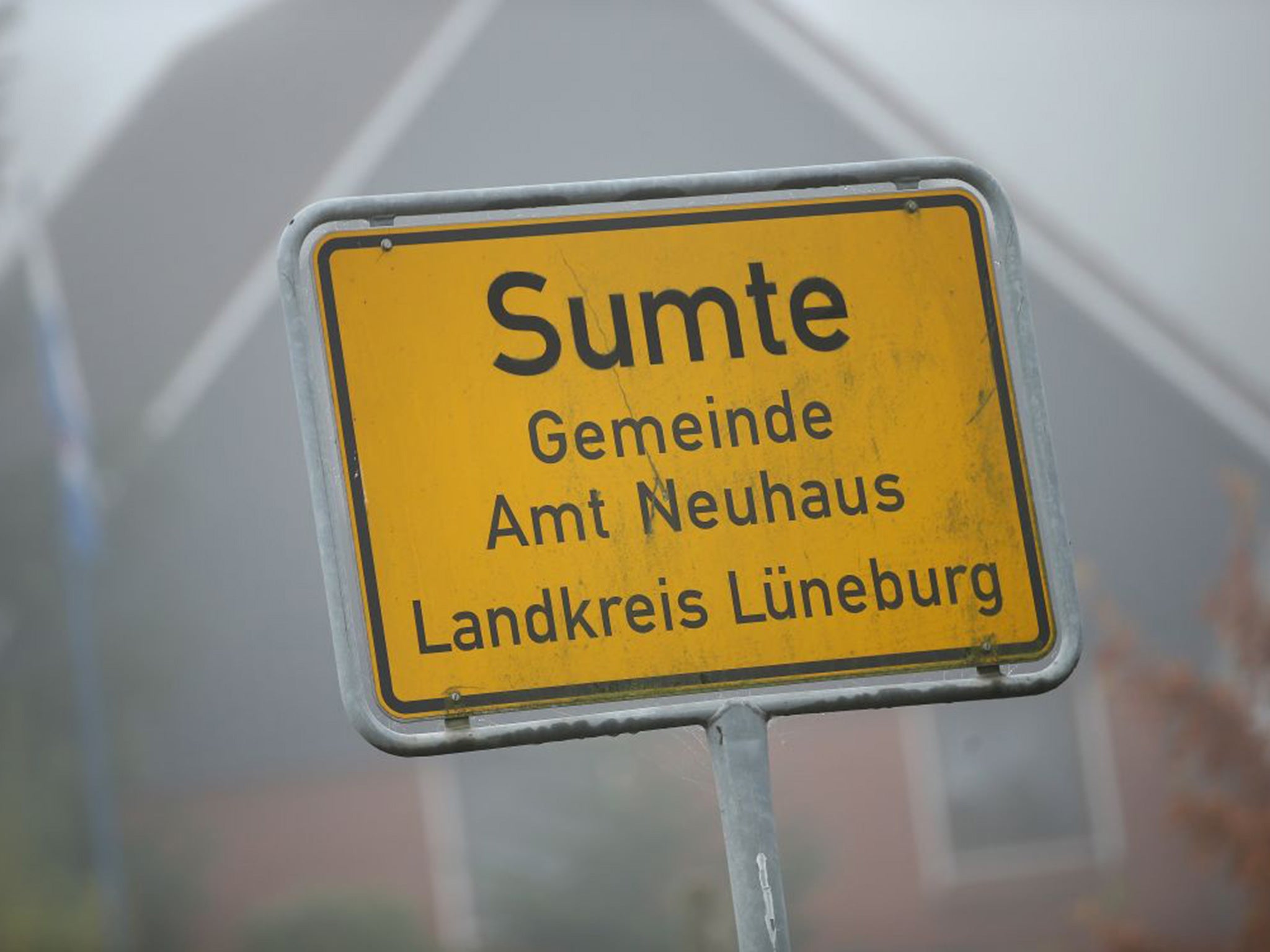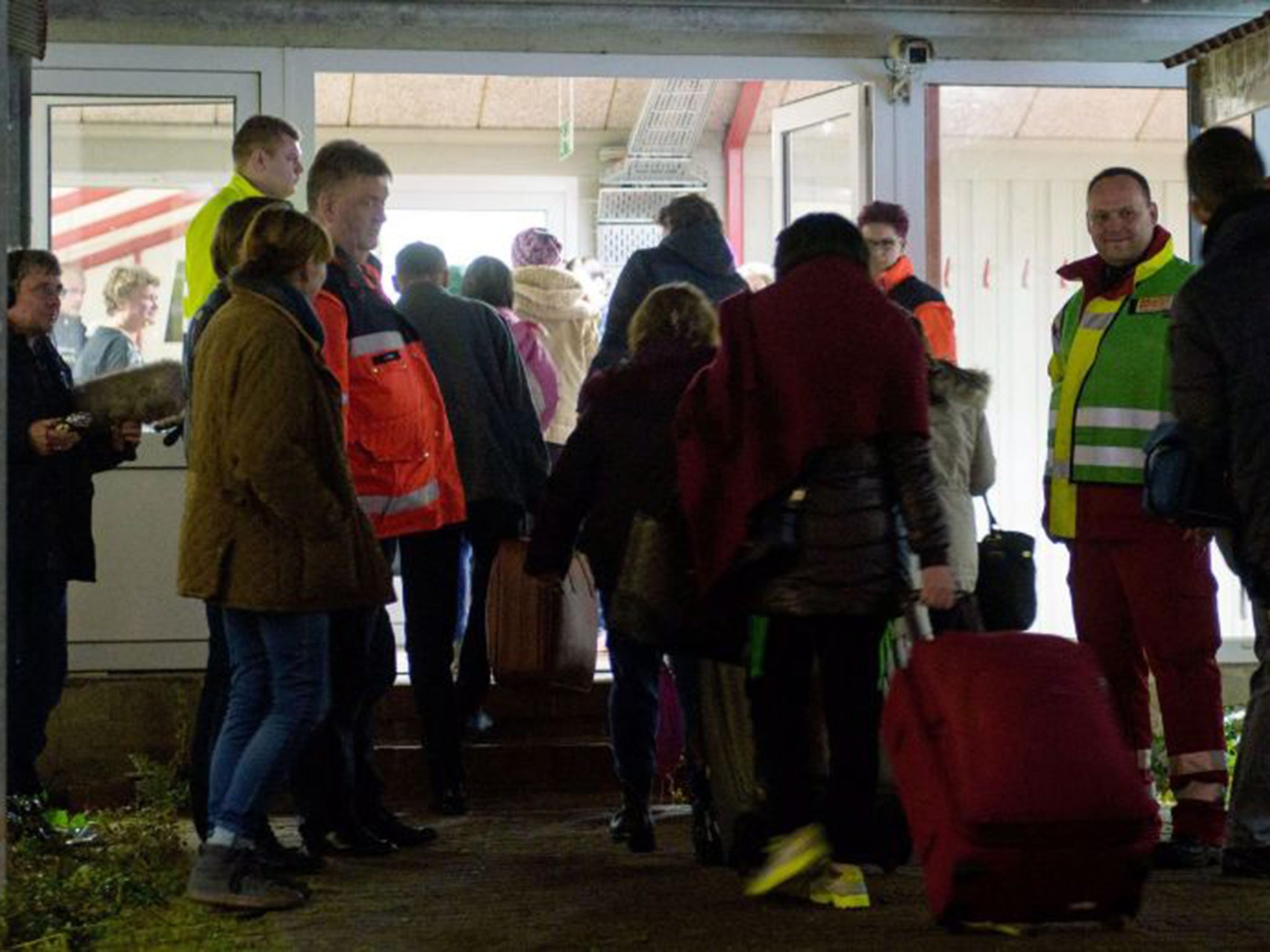Refugee crisis: German village Sumte shows reality behind open door policy - with 102 residents and 750 refugees
The village of Sumte, with a population of 102 and scant amenities, is to host 750 refugees. Its unsuitability shows the pressures Germany faces as it struggles to cope with an estimated million refugees. tony paterson reports

Your support helps us to tell the story
From reproductive rights to climate change to Big Tech, The Independent is on the ground when the story is developing. Whether it's investigating the financials of Elon Musk's pro-Trump PAC or producing our latest documentary, 'The A Word', which shines a light on the American women fighting for reproductive rights, we know how important it is to parse out the facts from the messaging.
At such a critical moment in US history, we need reporters on the ground. Your donation allows us to keep sending journalists to speak to both sides of the story.
The Independent is trusted by Americans across the entire political spectrum. And unlike many other quality news outlets, we choose not to lock Americans out of our reporting and analysis with paywalls. We believe quality journalism should be available to everyone, paid for by those who can afford it.
Your support makes all the difference.The 102 inhabitants of Sumte – an idyllic German hamlet of fine red-brick timbered barns and houses – had never seen anything like it. For most of this week groups of dark-haired, anorak-clad foreigners have been parading up and down the main street toying with their mobile phones, desperately trying to call home.
Sumte seems to epitomise the challenges thrown up by Chancellor Angela Merkel’s “open-door” policy in Europe’s deepening refugee crisis. The village has just taken in the first of more than 750 asylum-seekers and new arrivals will soon outnumber its inhabitants by seven-to-one. Yet despite the copious accommodation, large canteen and Arab-speaking security guards laid on for the first 229 Syrians and asylum-seekers from 18 other countries who arrived in the village this week, Sumte poses major problems for its new population – starting with the absence of mobile-phone reception.
“We can’t get in touch with our relatives back home and there is nothing to do here,” Hisham Ismaeell, a Syrian refugee in his early thirties, told The Independent.
Mr Ismaeell, a former chemistry student from the town of Sweida, said it had always been his dream to go to Europe and that he had sold land he owned in Syria to finance his harrowing journey to Germany and escape war at home. “When I get out of here some day, I would love to do something in films,” he said

But Sumte boasts no cinema. It has no shop, no café, no pub, no community centre and the nearest small town is three miles away. Most upsetting for the hamlet’s growing refugee population is that it lies in the middle of a telecommunications black hole.
“The phone and internet situation here is a joke, even local business people suffer,” said Sumte’s mayor, Christian Fabel, “We are trying to get something done about it, but Vodafone, who are the network providers, have not reacted so far,” he told The Independent.
Sumte’s mobile phone black hole may explain why its new refugee inhabitants constantly walk the streets trying to get a connection. The village’s isolated and seemingly unsuitable location underlines the pressures Germany faces as it struggles to cope with an influx of an estimated one million refugees from Syria and other conflict-torn regions in the Middle East this year alone.
Despite protests from Sumte’s residents’ about the size of the refugee contingent assigned to the village, the regional government of Lower Saxony, where the hamlet is located, agreed only to reduce the number of new arrivals from the 1,000 initially planned to 750 this year. “There has been no date set for the refugees’ departure. Any asylum-seekers who move to others part of Germany will be replaced by new arrivals,” said Jens Meier of Germany’s Samaritans association, which runs the refugee centre.
Sumte’s inhabitants were given little choice. The village offered empty refugee accommodation. Two years ago a debt-collecting company, which worked from a 21,000sq ft low-rise office complex on the edge of the village, went bust. The pressure on Lower Saxony’s authorities to find accommodation for a refugee influx into Germany estimated at 5,000 a day was massive. Mr Fabel says the villagers were told they had two options: “Either to say yes or yes” to the project.

The residents’ reaction has been mixed. Reinhold Schlemmer, a 72-year-old former Communist who was mayor while the village was part of the former East Germany, said he was delighted it could play a significant role in alleviating the suffering of refugees. “At least we can give them safety, food and a roof over their heads; for these people it means a great deal,” he told The Independent.
On the outside of a neat modern red-brick bungalow not far from the refugee camp, Sumte resident Christian Schreiber had just installed a series of heat-operated searchlights designed to illuminate his front garden as soon as a person neared the property. “This is just a precaution in view of what is happening in Sumte. I did this mainly because my wife was worried,” he said.
In a sign that Sumte’s residents may be concerned about preserving the village’s Teutonic character, a German flag was flying in the front garden of a timbered farmhouse. A woman in her fifties appeared on the village’s otherwise empty street. She didn’t want to be named. “I don’t see why we should have to take in these numbers. It won’t work. There is nothing for them here,” she insisted.
Yet the only openly hostile opponent of Sumte’s new asylum camp is a 32-year-old neo-Nazi activist, Holger Niemann, a car-wash employee who represents a coalition of far-right parties on the local council. Mr Niemann said that although he was against the camp, he also welcomed it because it could stir up opposition to Angel Merkel’s “divisive” refugee policies.
However, unlike other parts of former Communist East Germany, Sumte has no xenophobic Pegida movement and support for the anti-foreigner Alternative for Germany party is no higher than the national average. Mr Niemann says his attempts to generate opposition to the refugee population have yet to bear much fruit.
Yet the influx shows no sign of slowing. Germany is expected to take in the lion’s share of the three million refugees the European Commission predicts will arrive in Europe by the end of 2017. In an attempt to show increasingly sceptical voters that she getting a grip on the crisis, Ms Merkel’s government agreed on Thursday to set up five centres to hold unwanted refugees until they are sent home.
In Sumte, meanwhile, Mr Fabel was gearing up for his first face-to-face encounter with the village’s new inhabitants. He appeared somewhat uncertain about what to say. “ Nice to see you, is the first thing I can think of,” he said.
Join our commenting forum
Join thought-provoking conversations, follow other Independent readers and see their replies
Comments